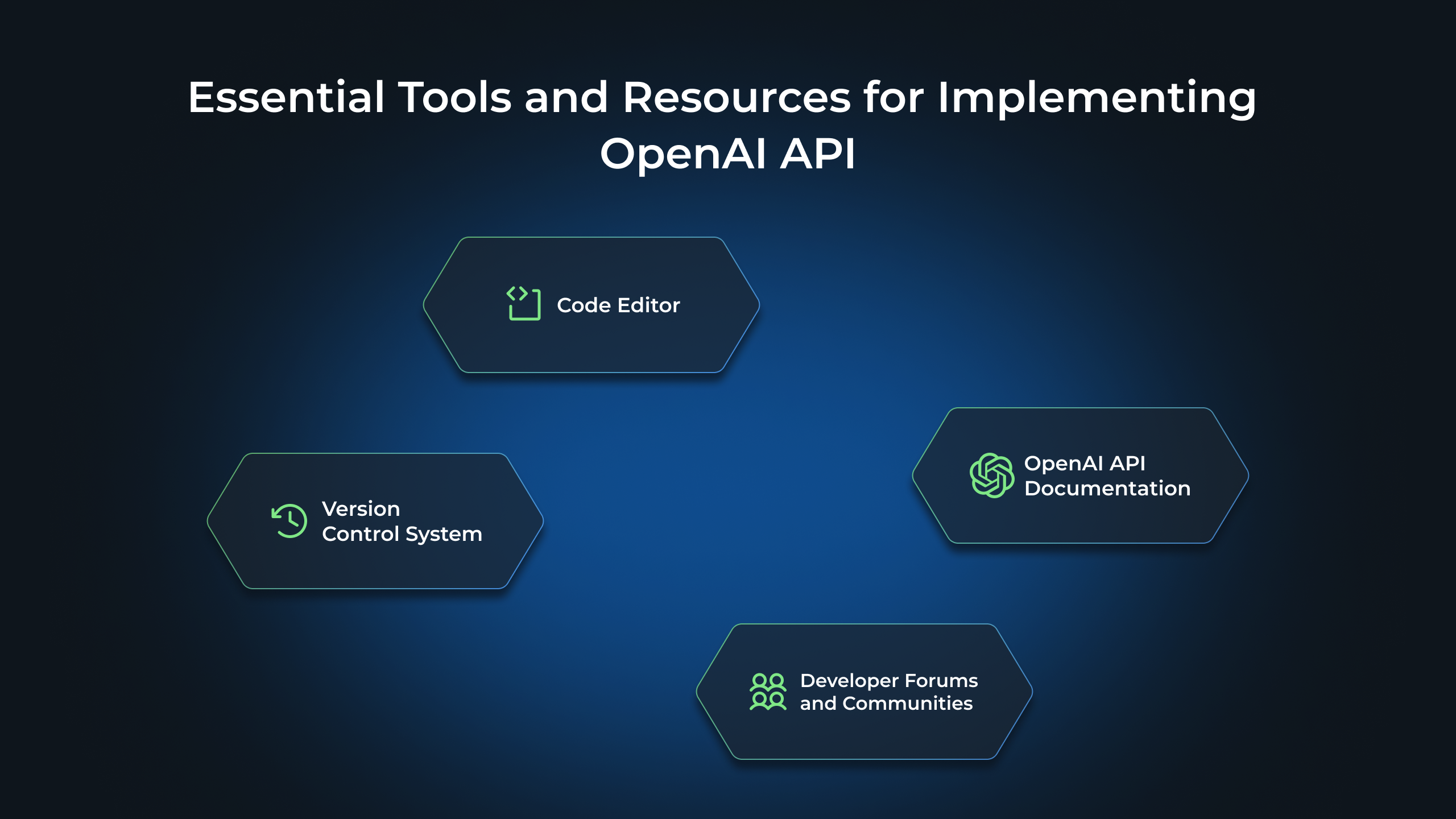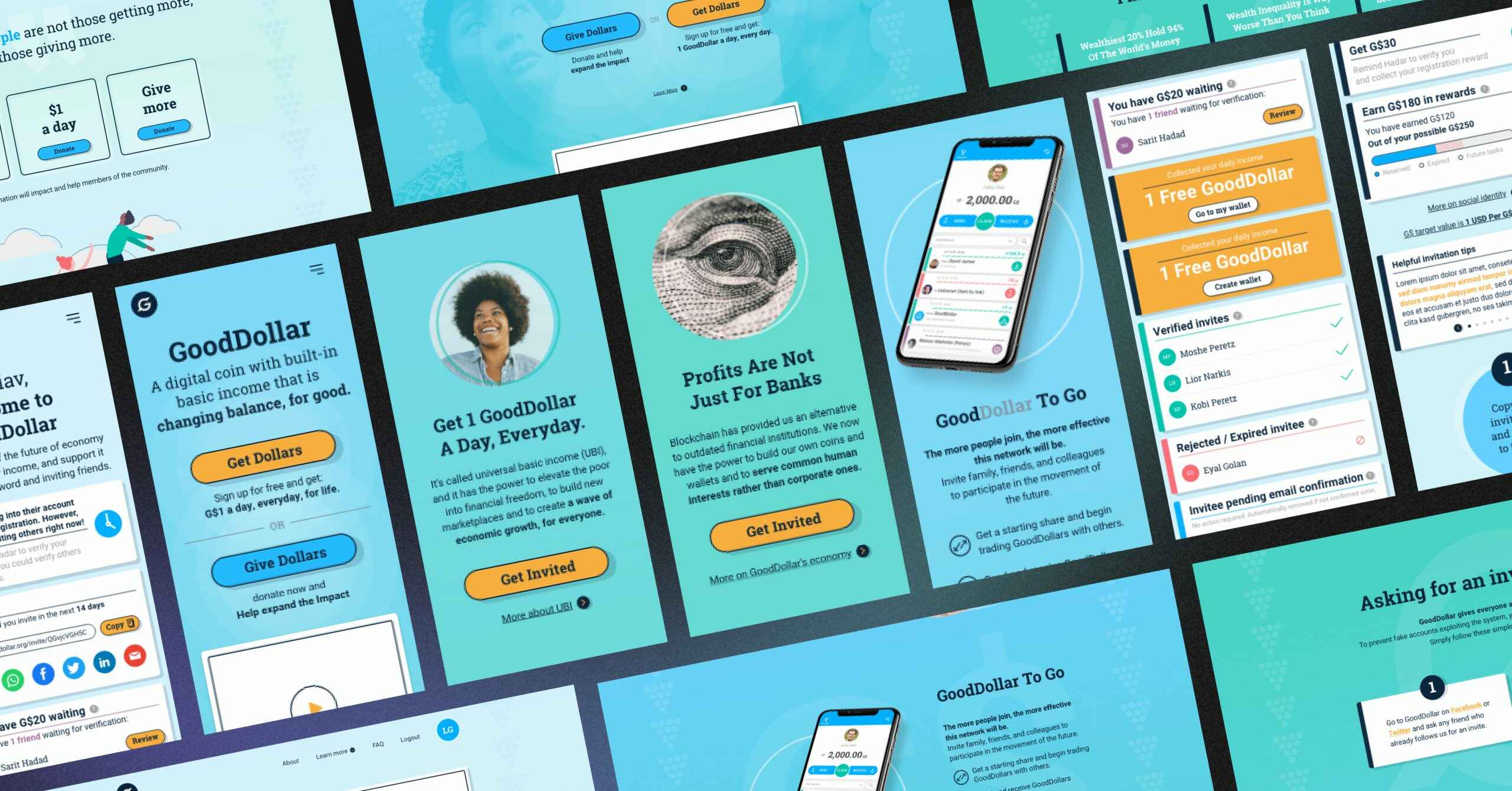In today’s digital age, chatbots have become an integral part of online customer interactions. They provide instant assistance and efficiently handle customer queries. To ensure their effectiveness and quality, developers are constantly exploring innovative ways to enhance chatbot capabilities. One such way is by incorporating the OpenAI API into chatbot development. In this article, we will delve into the details of implementing OpenAI API for chatbots, from understanding the basics to troubleshooting common issues.
The Basics of OpenAI API
Before we dive into the implementation process, it is essential to have a clear understanding of what OpenAI API is and its role in chatbots. OpenAI API is a powerful tool that allows developers to access state-of-the-art natural language processing models created by OpenAI. It provides an interface for chatbots to generate human-like responses, making the conversation more engaging and realistic. With OpenAI API, chatbots can better understand and respond to user queries, creating an enhanced user experience.
What is OpenAI API?
OpenAI API is an application programming interface that connects developers to OpenAI’s advanced natural language processing models. These models are trained on vast amounts of textual data and can generate coherent and contextually relevant responses. OpenAI API is designed to make it easier for developers to leverage the power of these models in their own applications and systems.
The Role of OpenAI API in Chatbots
OpenAI API plays a crucial role in empowering chatbots with advanced language processing capabilities. By integrating OpenAI API into chatbots, developers can enhance the chatbot’s ability to understand and generate human-like responses. This opens up a world of possibilities for creating more realistic and engaging conversations with users.
When a user interacts with a chatbot, they expect the conversation to be smooth and natural. OpenAI API enables chatbots to achieve this by providing access to cutting-edge language models. These models have been trained on a wide range of textual data, allowing them to understand the context and nuances of user queries.
With OpenAI API, chatbots can generate responses that are not only accurate but also contextually relevant. The models can understand the intent behind the user’s query and generate a response that addresses their needs effectively. This makes the conversation more engaging and satisfying for the user.
Moreover, OpenAI API allows developers to fine-tune the language models according to their specific requirements. This means that chatbots can be customized to cater to different industries, domains, or even individual preferences. Developers can train the models on domain-specific data, enabling the chatbot to provide more accurate and tailored responses.
Another important aspect of OpenAI API is its ability to handle complex conversations. Chatbots powered by OpenAI API can maintain context and coherence throughout a conversation, making it feel more like interacting with a human. The models can remember previous messages and refer back to them when generating responses, ensuring a seamless flow of conversation.
OpenAI API also offers developers the flexibility to control the output of the language models. Developers can specify parameters such as temperature and max tokens to influence the creativity and length of the generated responses. This allows them to strike a balance between generating diverse and interesting responses while maintaining relevance and coherence.
In conclusion, OpenAI API is a game-changer in the world of chatbots. It empowers developers to create chatbots that can understand and generate human-like responses, revolutionizing the way we interact with technology. With OpenAI API, chatbots can provide enhanced user experiences, making conversations more engaging, realistic, and satisfying.
Preparing for OpenAI API Implementation
Before diving into the implementation process, it is essential to prepare your development environment and gather the necessary tools and resources. This will ensure a smooth and efficient integration of OpenAI API into your chatbot.
Implementing OpenAI API requires careful planning and attention to detail. By following the recommended steps and utilizing the right tools, you can set yourself up for success.
Essential Tools and Resources

As a software development company with a proven track record, WeSoftYou recommends using reliable and efficient tools to streamline the implementation process. Some essential tools and resources for implementing OpenAI API include a code editor, a version control system, OpenAI API documentation, and developer forums or communities for support.
Choosing the right code editor is crucial for efficient development. Popular choices among developers include Visual Studio Code, Sublime Text, and Atom. These editors offer features such as syntax highlighting, code completion, and debugging capabilities, which can greatly enhance your development experience.
Version control systems like Git are essential for managing your codebase and collaborating with other developers. Git allows you to track changes, revert to previous versions, and merge code seamlessly. By utilizing Git, you can ensure that your implementation of OpenAI API remains organized and easily maintainable.
OpenAI API documentation is a valuable resource that provides detailed information about the API’s capabilities, endpoints, and usage guidelines. It is essential to familiarize yourself with the documentation to understand how to interact with the API effectively. Additionally, developer forums and communities can provide valuable insights, tips, and solutions to common implementation challenges.
Setting Up Your Development Environment
Setting up your development environment is crucial for a successful implementation of OpenAI API. Ensure that you have the latest version of the programming language you are using, along with the necessary libraries or frameworks. WeSoftYou suggests creating a virtual environment to isolate your development environment and prevent any conflicts with existing dependencies.
A virtual environment allows you to create an isolated space where you can install specific versions of libraries and frameworks without affecting your system-wide configuration. This ensures that your OpenAI API implementation remains independent and does not interfere with other projects or applications.
Once you have set up your virtual environment, you can proceed to install the required libraries or frameworks. Depending on your chosen programming language, you may need to use package managers like pip (Python), npm (JavaScript), or composer (PHP) to install the necessary dependencies.
It is also recommended to set up a separate project directory specifically for your OpenAI API implementation. This will help you keep your code organized and easily accessible. By following a consistent directory structure, you can navigate your codebase effortlessly and locate specific files or modules when needed.
Before starting the implementation process, it is important to ensure that you have a clear understanding of the requirements and objectives of your chatbot. This will help you design a robust architecture and implement the necessary features effectively.
By following these steps and utilizing the recommended tools and resources, you can lay a solid foundation for your OpenAI API implementation. With careful planning and attention to detail, you can create a powerful and intelligent chatbot that leverages the capabilities of OpenAI API to provide exceptional user experiences.
Step-by-Step Guide to Implement OpenAI API
Now that you have a clear understanding of OpenAI API and have prepared your development environment, let’s dive into the step-by-step guide for implementing OpenAI API into your chatbot.
Accessing the OpenAI API
The first step is to obtain access to the OpenAI API. You can apply for access on the OpenAI website and follow their guidelines for approval. Once approved, you will receive an API key, which you will use to authenticate your requests.
Accessing the OpenAI API is an exciting opportunity that opens up a world of possibilities for your chatbot. With this API, you can tap into the power of OpenAI’s language models to generate human-like responses. This means that your chatbot will be able to engage in more natural and meaningful conversations with users.
Once you have received your API key, you are ready to move on to the next step.
Integrating OpenAI API with Your Chatbot
Integrating OpenAI API with your chatbot involves sending user queries to the API and receiving the generated response. WeSoftYou suggests designing an efficient data flow between your chatbot and the API to minimize latency and ensure smooth conversations. Experiment with different text prompts and parameters to fine-tune the responses generated by the API for optimal chatbot performance.
Integrating the OpenAI API with your chatbot requires careful planning and consideration. You need to determine how your chatbot will interact with the API and how it will handle user queries. Will you send each query individually to the API, or will you batch them together for more efficient processing?
It is also important to experiment with different text prompts and parameters to get the best results from the API. By tweaking these inputs, you can influence the style and tone of the generated responses. This allows you to customize the chatbot’s personality and ensure that it aligns with your brand or application.
Additionally, you should consider implementing error handling mechanisms to gracefully handle any issues that may arise when interacting with the API. This will help maintain a seamless user experience and prevent any disruptions in the conversation flow.
By following these steps and taking the time to optimize the integration of the OpenAI API with your chatbot, you can create a powerful and engaging conversational experience for your users.
What are Common Issues of Implementing OpenAI API?
While implementing OpenAI API, you may encounter a few common issues. Rest assured, WeSoftYou has got you covered with some troubleshooting tips to overcome these challenges.
When working with the OpenAI API, it’s important to be aware of potential errors that may arise. One common issue that developers often face is encountering API errors. If you find yourself in this situation, there are a few steps you can take to resolve the problem. First, double-check that you are using the correct API key. It’s easy to accidentally use the wrong key, so verifying this can save you a lot of time and frustration. Additionally, make sure that you have followed the API guidelines provided by OpenAI. These guidelines outline best practices and can help you avoid common pitfalls.
Another potential cause of API errors is syntax errors in your code. It’s always a good idea to review your code carefully to ensure that there are no typos or mistakes that could be causing the error. Similarly, check that you are passing the correct parameter values to the API. Incorrect parameter values can lead to unexpected behavior or errors.
Exceeding the API usage limits is another common issue that developers may encounter. OpenAI sets limits on the number of API calls you can make within a certain time frame. If you exceed these limits, you may receive errors or be temporarily blocked from making further requests. To avoid this, it’s important to monitor your API usage and stay within the specified limits. Keep in mind that different API endpoints may have different usage limits, so be sure to familiarize yourself with the specific limits for the endpoints you are using.
Dealing with API Errors
If you encounter API errors, ensure that you are using the correct API key and have followed the API guidelines provided by OpenAI. Additionally, double-check your code for any syntax errors or incorrect parameter values. Another common issue is exceeding the API usage limits, so monitor your API usage to avoid unexpected errors.
Optimizing API requests is essential for achieving optimal performance and cost efficiency. There are several strategies you can employ to make the most out of your API usage. One approach is to batch multiple queries together. Instead of making individual API calls for each query, you can group them together and send them as a single request. This can help reduce the number of API calls you make, resulting in improved efficiency and potentially lower costs.
Caching frequently requested responses is another effective technique for optimizing API requests. By storing the responses of commonly made queries, you can avoid making unnecessary API calls. Instead, you can retrieve the cached response, saving both time and resources. However, it’s important to keep in mind that caching should be used judiciously. If the data you are requesting is time-sensitive or frequently changing, caching may not be appropriate.
Experimenting with different temperature and max tokens values can also help optimize your API requests. The temperature parameter controls the randomness of the generated text, with higher values producing more diverse outputs. The max tokens parameter, on the other hand, limits the length of the response. By adjusting these values, you can find the right balance between response quality and response length for your specific use case.
Optimizing API Requests
To ensure optimal performance and cost efficiency, it is crucial to optimize your API requests. Batch multiple queries together to reduce API calls, and cache frequently requested responses to minimize unnecessary API usage. Experiment with different temperature and max tokens values to strike the right balance between response quality and response length.
Best Practices for Using OpenAI API
While using OpenAI API, it is important to follow certain best practices to ensure security, privacy, and the efficient functioning of your chatbot.
Ensuring Security and Privacy
As a software development company with expertise in data security, WeSoftYou emphasizes the importance of protecting user data. When using OpenAI API, it is crucial to implement security measures to safeguard sensitive information. This includes following best practices for handling and storing user data, such as encrypting data at rest and in transit, implementing access controls, and regularly updating security patches.
In addition to data security, it is essential to comply with relevant privacy regulations. Familiarize yourself with the applicable laws and regulations, such as the General Data Protection Regulation (GDPR) or the California Consumer Privacy Act (CCPA), and ensure that your chatbot’s usage of OpenAI API aligns with these requirements. Implement mechanisms to obtain user consent for data collection and clearly communicate your data usage policies to users.
When generating responses with OpenAI API, exercise caution to avoid sharing sensitive or inappropriate information unintentionally. Review and sanitize the data prompts to remove any personally identifiable information (PII) or confidential data before sending it to the API. Regularly review and update your chatbot’s response generation logic to prevent any potential data leaks or breaches.
Maximizing the Efficiency of Your Chatbot
To maximize the efficiency of your chatbot and provide the best user experience, consider fine-tuning the responses generated by OpenAI API. Experiment with different text prompts to find the most effective way to communicate with your users. Adjust the response length to strike a balance between providing sufficient information and avoiding overwhelming the user with a lengthy response.
Training your chatbot on specific domains or topics can greatly enhance its performance. By providing relevant training data and guiding the model’s learning process, you can tailor the responses to better cater to your target audience’s needs. This can include domain-specific terminology, industry jargon, or contextual understanding of specific topics.
Regularly monitor user feedback to identify areas for improvement and continuously enhance your chatbot’s performance. Actively engage with your users to understand their pain points, gather suggestions, and incorporate their feedback into your chatbot’s development roadmap. This iterative approach will help you refine the chatbot’s responses, improve its accuracy, and deliver a more satisfying user experience.
Remember that the OpenAI API is a powerful tool, but it requires responsible usage. Stay updated with OpenAI’s guidelines and terms of service to ensure compliance and ethical use of the API. By following these best practices, you can create a secure, privacy-conscious, and efficient chatbot that delivers value to your users.
Future Trends in OpenAI and Chatbot Technology
As technology continues to evolve at a rapid pace, the future of OpenAI and chatbot technology holds exciting possibilities. From our experience as a software development company, we can predict several key developments in this field.
Advancements in AI Research
The landscape of artificial intelligence (AI) is marked by ongoing advancements in research and development, driving a continuous evolution in the field. This progress translates into the creation of more sophisticated and intelligent chatbots. As AI researchers delve deeper into understanding human language and cognition, chatbots benefit from cutting-edge technologies, resulting in enhanced capabilities and improved user interactions.
OpenAI Model Improvements
OpenAI remains at the forefront of innovation by consistently enhancing its models through regular updates. Developers navigating the world of AI-driven chatbots must stay vigilant and updated to harness the full potential of these advancements. The iterative improvements introduced by OpenAI not only refine the models’ performance but also introduce novel features, ensuring that developers can create chatbots with the latest and most powerful capabilities.
Staying Informed on OpenAI API Changes
To navigate the dynamic landscape of OpenAI API changes, developers are encouraged to maintain regular reference to OpenAI’s comprehensive documentation and actively participate in developer forums. These resources serve as valuable hubs for insights into recent updates and improvements. OpenAI’s official channels and newsletters further provide essential information on changes, trends, and best practices. For a seamless adaptation to these changes, WeSoftYou offers consultation services, guiding developers through the evolving OpenAI ecosystem.
Enhancing Chatbot Capabilities
The implementation of OpenAI API stands as a pivotal strategy for significantly enhancing chatbot capabilities. A robust understanding of the technology, meticulous preparation, and adherence to best practices are foundational to unleashing the full potential of OpenAI API. Beyond implementation, troubleshooting common issues and staying abreast of the latest technological developments are vital components of ensuring that chatbots continually evolve to meet user expectations and industry standards.
Additionally, WeSoftYou offers consultation services to help developers navigate through these changes and ensure the seamless performance of their chatbots.
Conclusion
Get API Access: Sign up for access to the OpenAI API on the OpenAI platform.
Understand the API: Familiarize yourself with the API documentation provided by OpenAI to understand how to make requests and handle responses.
Choose an Endpoint: Decide whether you want to use the “davinci” endpoint for general-purpose tasks or the “curie” endpoint for a more cost-effective option with slightly reduced capabilities.
Make API Requests: Use the OpenAI API to make requests for chatbot interactions. Typically, you send a series of messages as input and receive model-generated messages as output.
Handle Responses: Process the API responses in your application to extract the information generated by the chatbot.
Sign Up: Sign up for access to the ChatGPT API on the OpenAI platform.
Read Documentation: Review the ChatGPT API documentation provided by OpenAI to understand the specifics of making requests and handling responses.
Use the API Key: Obtain the API key from OpenAI and integrate it into your application to authenticate your requests.
Make Requests: Structure your requests according to the API documentation, including details like the model, messages, and other parameters.
Handle Responses: Process the responses from the ChatGPT API in your application, incorporating the generated content as needed.
As of my last update, OpenAI provides both free and paid access to its API. There is a free subscription tier with limitations, and additional usage may incur costs. Check OpenAI’s pricing page for the most current information on costs and subscription plans. Keep in mind that policies and offerings may have changed since my last update.





















